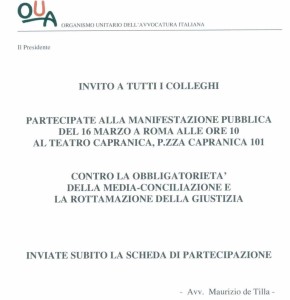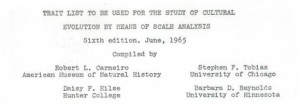During a break in arbitration hearings in New York a few years ago, I took a side trip to the American Museum of Natural History to meet Robert Carneiro, the museum’s Curator Emeritus of South American Ethnology. (You do these things when you’re an in-house litigation counsel, especially when the alternative is another day in a windowless conference room reviewing documents.)
Carneiro lived in the 1960’s among pre-industrial “stone-age” peoples of the Amazonian basin, and his observations of their conflicts and conquests led him to advance what is today known as “Carneiro’s Circumscription Theory.”
Overly simplified, the theory is that civilizations have arisen where populations are bounded on all sides by mountains, oceans, or deserts that restrict their mobility. This produces warfare, with the resulting conquests leading to larger societies, and the larger societies necessitating mechanisms for successfully sharing access to limited resources. As we wound our way past the museum’s dioramas on the way to his office, Carneiro explained how cultural traits can be found to emerge with a certain predictability as humanity progressed from small autonomous bands to large interconnected populations relying on trade and markets, a path followed by many groups since the last ice age 13,000 years ago.
And here’s why I’m mentioning this to international readers of Kluwer’s new Mediation blog: once we got to Carneiro’s office, he dug out a yellowed copy of an article he and colleagues had published in 1965 in an attempt to list these predictable cultural traits.
The list begins, unsurprisingly, with methods of farming and subsistence that indigineous groups are found to employ at various stages of development.
But what jumped out at me was item n. 351 on page 20 of the list:
I immediately asked Carneiro if he had observed mediation being practiced in pre-industrial societies. Characteristically, he answered “oh yes, we found all these things.” This was over 45 years ago.
Ok, it is is hardly news to readers of a blog like this one that mediation has existed in different forms for thousands of years. In fact, the Wikipedia entry on Alternative Dispute Resolution makes an interesting observation about its use in antiquity:
“Latin has a number of terms for mediator that predate the Roman Empire. Any time there are formal adjudicative processes it appears that there are informal ones as well. It is probably fruitless to attempt to determine which group had mediation first.” SOURCE: Wikipedia (Alternative Dsipute Resolution)
What was startling to me about Carneiro’s research, however, was the inclusion of mediation as a cultural trait that can be predicted to emerge in societies that reach a certain size and economic complexity. It would mean that mediation is not so much a judicial construct or legal innovation of enlightened civilization, but a cultural trait that must inevitably emerge for a society to grow and expand, for example through commercial trade.
The No-Mediation Option
Of course, not all societies take the step towards greater social and economic complexity. Small, autonomous bands have existed throughout history, and they continue to employ many different methods of dispute resolution. For example, one group that Carneiro studied was the Yanomamö, a people who still live in small groups of 50 or so people in the Amazon forests. They resolve their differences using large wooden clubs, with male litigants taking turns striking each other. The prevailing party is the one who remains standing.
While the ability to whack the opposing party may be tempting in some cases, it will rarely be the most efficient or just method of resolution since one or both parties is likely to become seriously injured regardless of who is in the right. But it apparently works for the Yanomamö. Not being circumscribed by geological barriers, anyone who is dissatisfied with the resulting “justice” can simply leave the group and settle elsewhere.
By contrast, Carneiro pointed out, the Incas who had once occupied parts of the same continent were initially squeezed between mountains and ocean. Given Carneiro’s findings on the inevitability of finding certain cultural traits emerging as societies grow, it is not unreasonable to imagine that they relied on mediation and other peaceful means of resolving conflict in order to develop their commercial trade and huge market places.
When I asked Carneiro about all this for the inauguration of Kluwer’s mediation blog, he agreed that, “it takes a certain size before a society begins to practice mediation on anything like a regular basis.” Thinking more about it, he said he sees things happening this way:
“There’s always going to be conflict of some sort, and there are basically three things that can happen when it arises: (1) the disputants can move away from each other, thereby ending the conflict; (2) the disputants can stay in place and fight it out physically in some sort of duel (like the Yanomamö do) but short of unregulated, all-out fighting; or (3) there can be some non-violent means of adjudicating the dispute.
This last alternative can, in turn, be subdivided into two forms: (a) a judicial process can intervene in which an official judicial system resolves the matter and has the power to enforce its decision, and (b) mediation, in which a third party, lacking enforcement power but with persuasive ability, works with the disputants to help them resolve the dispute.”
And Predictably an Opposition
Working in the field of dispute resolution, I’ve been thinking a lot about the inevitability of the trend towards mediation in our economically interdependent world. And, living in Italy, I’ve also been thinking about the predictability of the opposition to this trend from defenders of the other methods of resolving conflict that Carneiro has found to emerge at different stages of societal development.
There may be no better example recently than the one that appears in the notice at the very top of this post. It is a call to arms by the Italian Organization of Lawyers (OUA), inviting members of the bar to participate in one of the protests they organized this year against Italy’s new mediation law.
As background, you should know that the country has been rated as having one of the worst records for enforcing contractual rights, largely due to an impossibly high case court backlog that the law is intended to alleviate. The protesting lawyers, unswayed by the fact that the existing system hampers their country’s economy, are not unlike Yanomamö tribesmen who would defend their wooden clubs against any effort to change.
It would not be fair, though, to single out either the Italian legal system or the protesters in Italy who feel threatened by mediation. Most litigation and arbitration procedures are idiosyncratic, provide many opportunities for delay, and require specialized expertise. I have many examples from my own practice of counsel in different countries expressing hostility to a mediation proposal, and Carneiro provided a fitting example from history of how lawyers will happily maximize the litigation option until limits are set:
“I recalled an instance mentioned once in a course I took on South American ethnography. It was reported that during early colonial times in Peru there came to be an excessive amount of litigation. Indeed, there was so much of it that for a time the colonial government banned more lawyers from entering the country!”
By contrast, mediation practice is quick, rarely constrained by geographic or political boundaries, and relatively inexpensive. A party who engages in mediation today in Milan or London will not only be advantaged if the case settles early, in all likelihood they will face a similar experience tomorrow with a mediation conducted in Singapore or San Francisco.
Given the options, which practice do you think is most likely to prevail over time?
At the end of our visit together in New York, Carneiro escorted me out the museum, taking me through the Hall of Human Origins with its displays of our extinct ancestors and their cultures of eons ago. This tends to put things a bit into perspective.
In betting on the trend towards mediation or modern efforts to suppress it, I would put my money on the form of dispute resolution that has survived 13,000 years of cultural evolution.
Heck, even Kluwer has started a blog about mediation!
________________________
To make sure you do not miss out on regular updates from the Kluwer Mediation Blog, please subscribe here.








